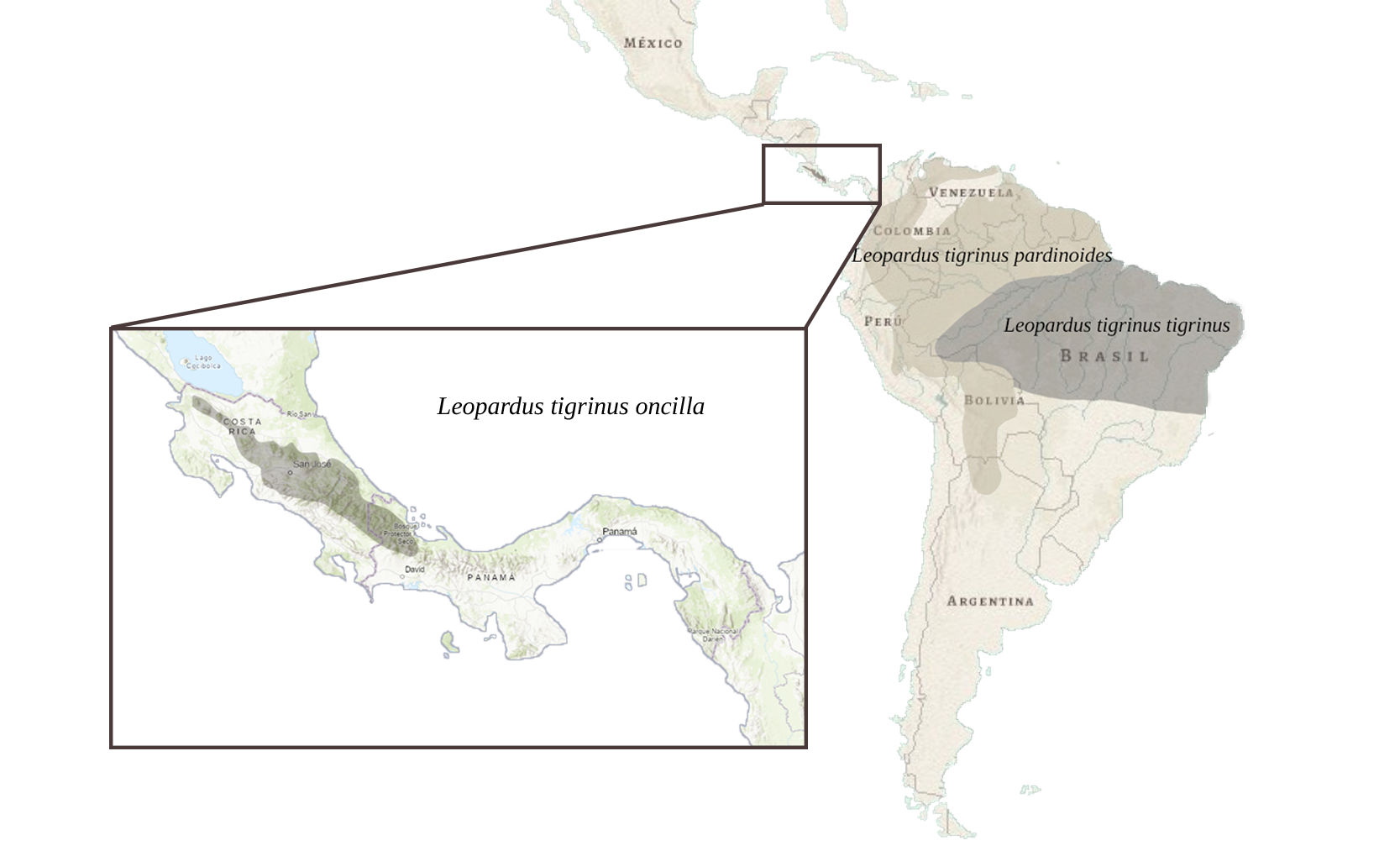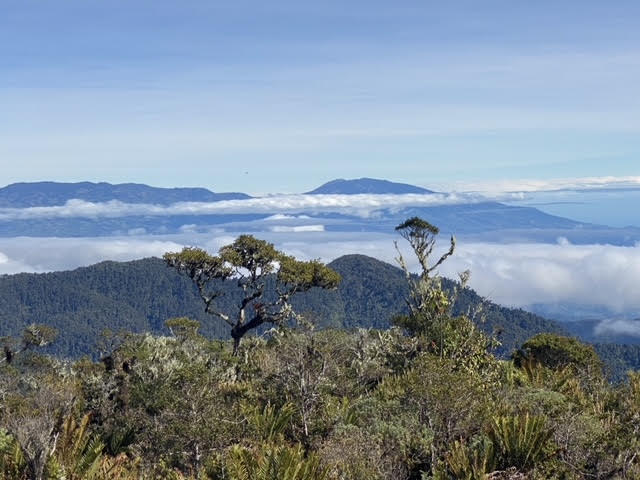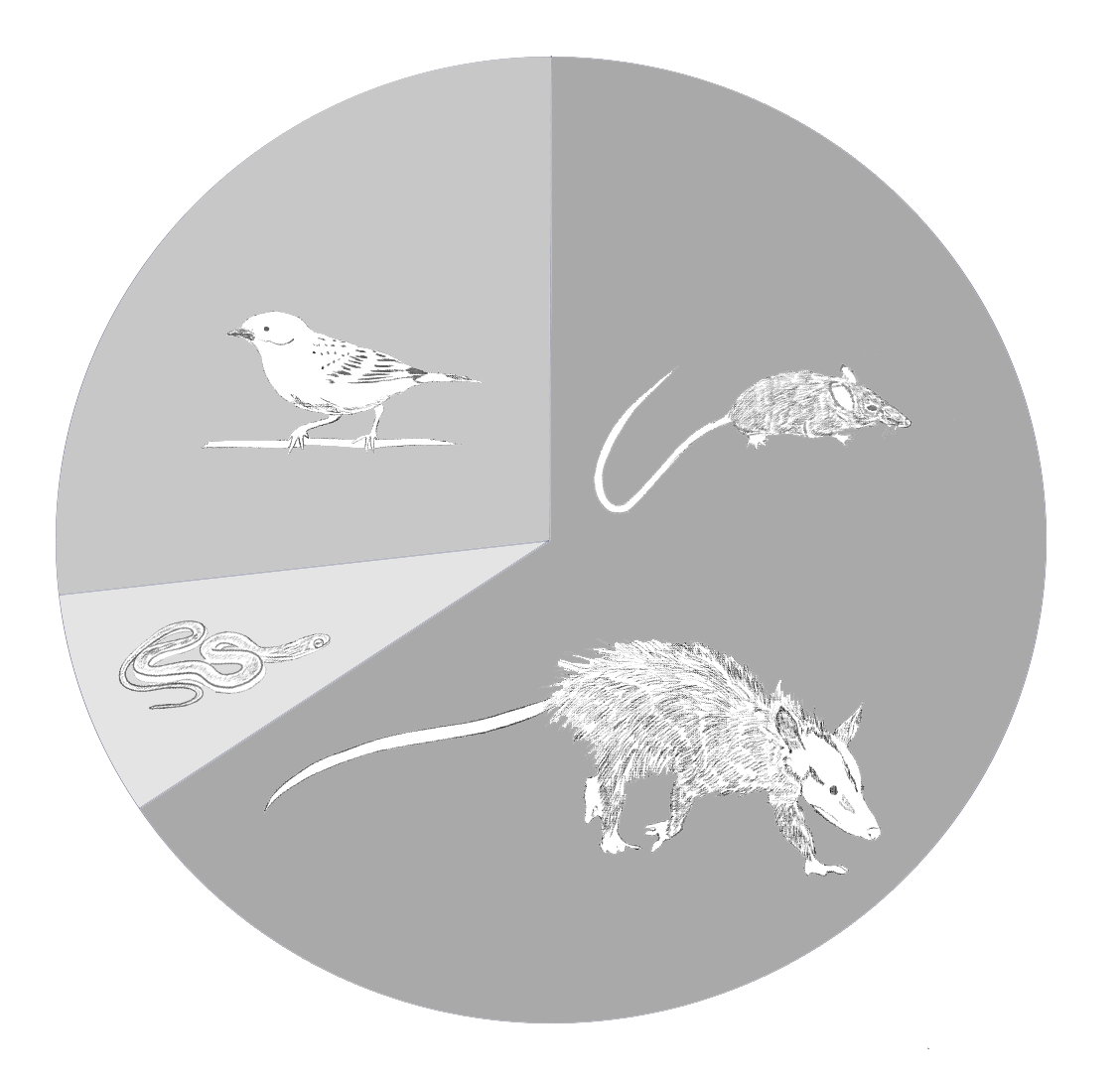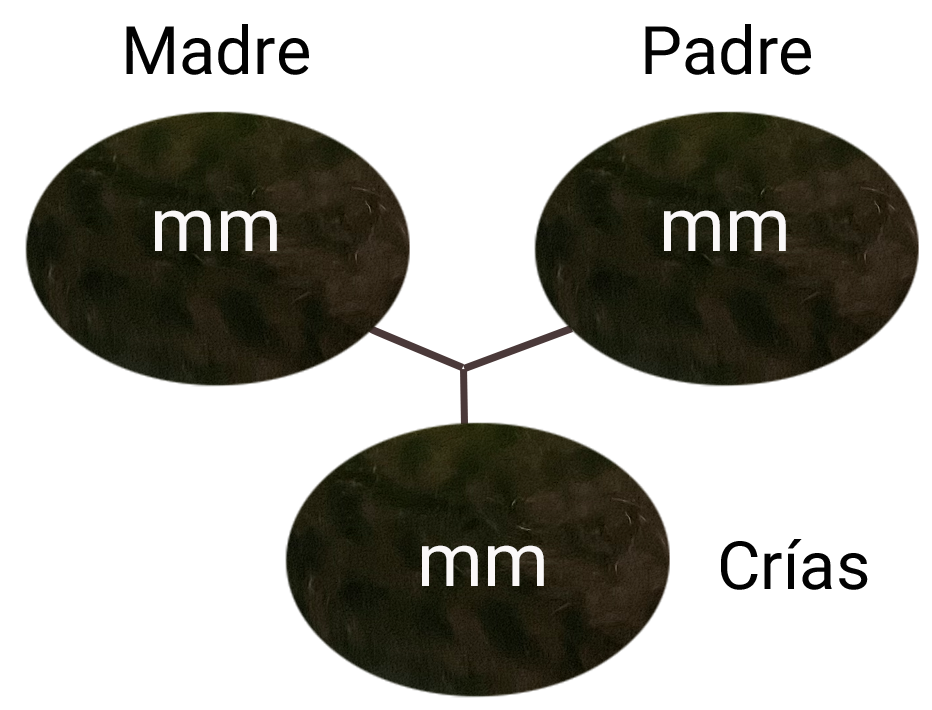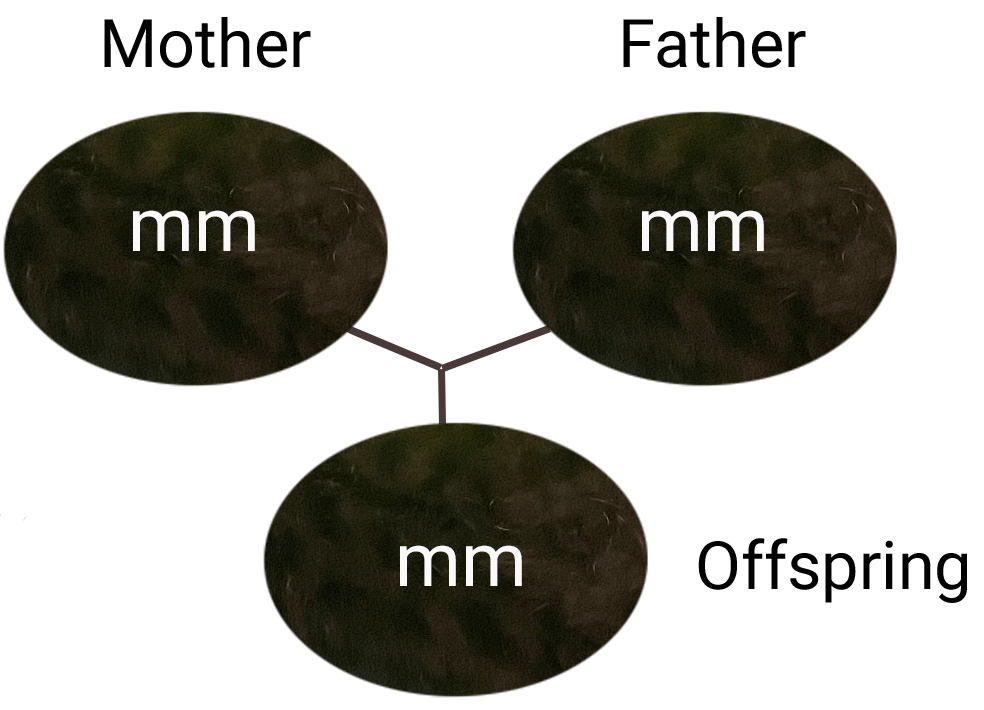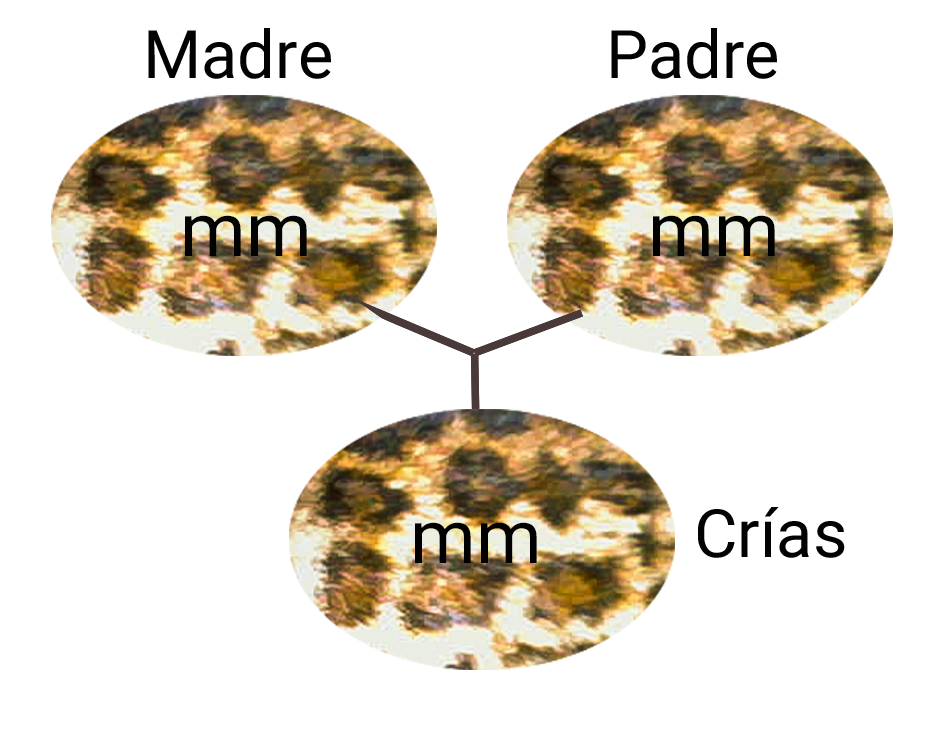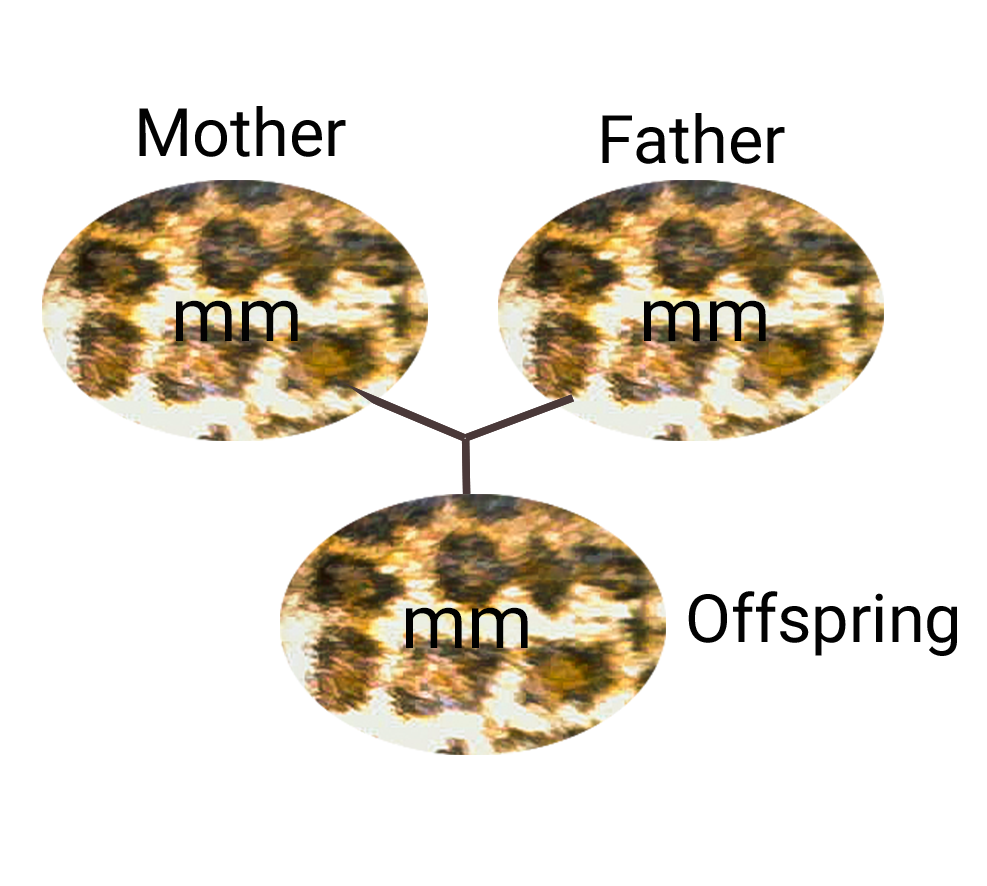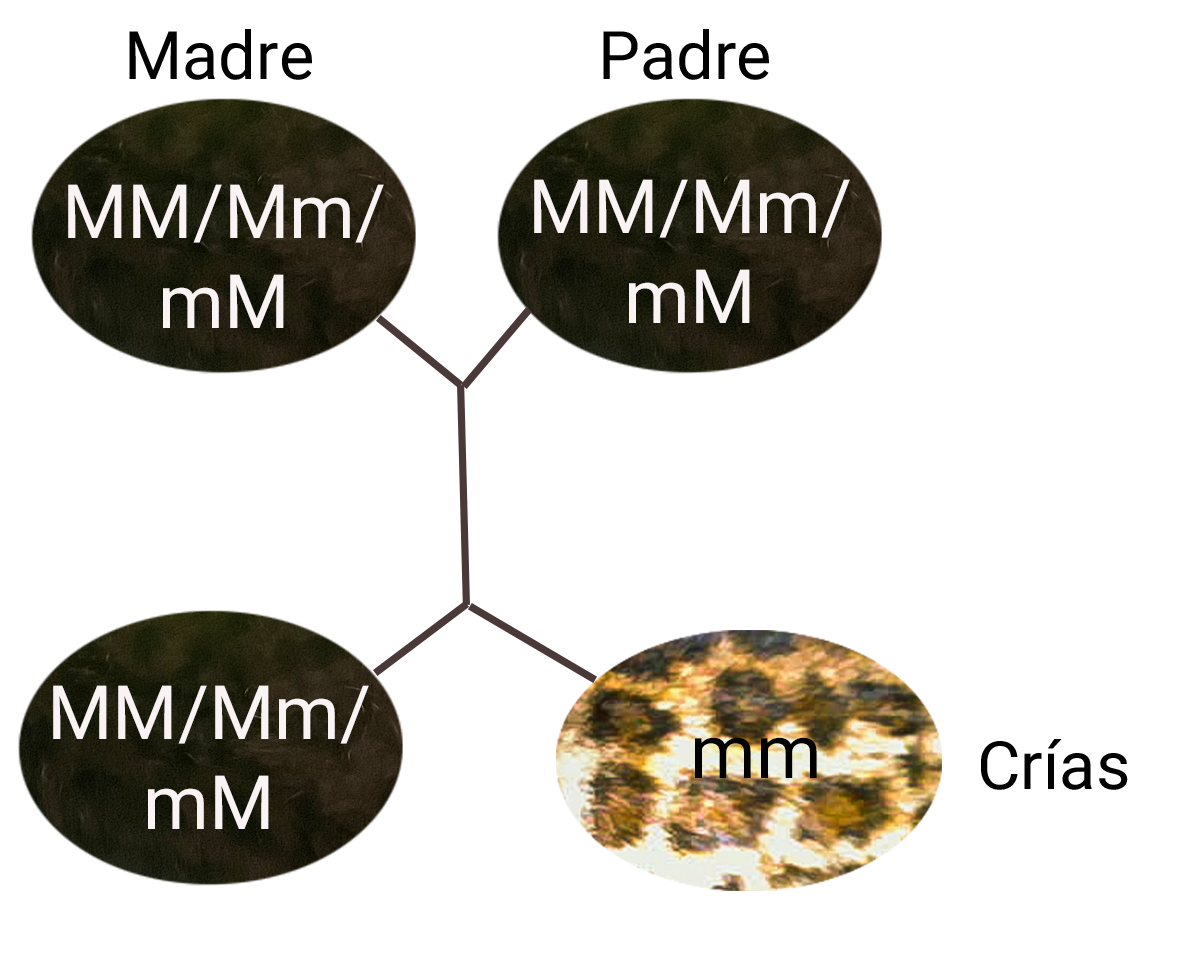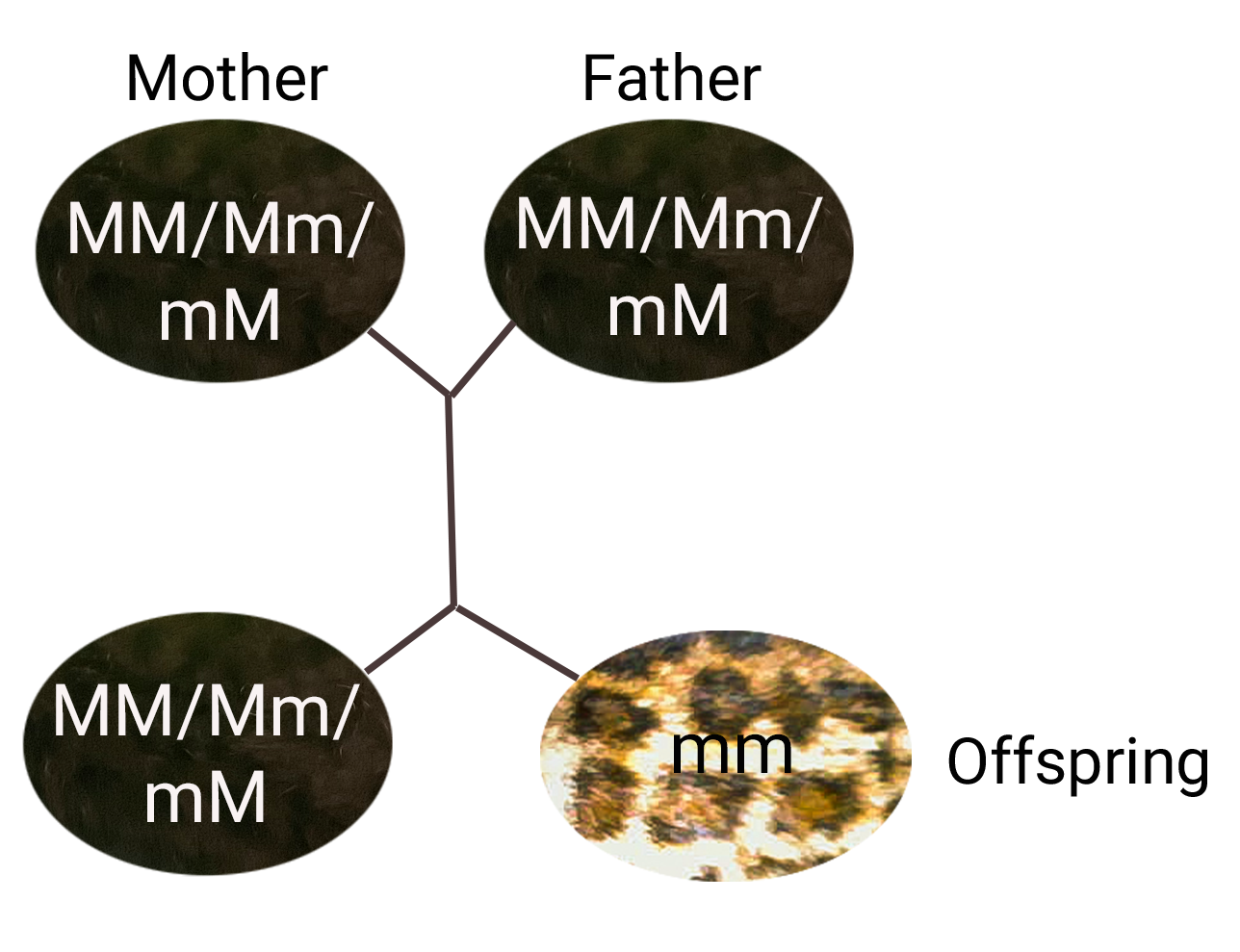DESCRIPCIÓN
DESCRIPTION
Manchas en las Orejas
Ear spots
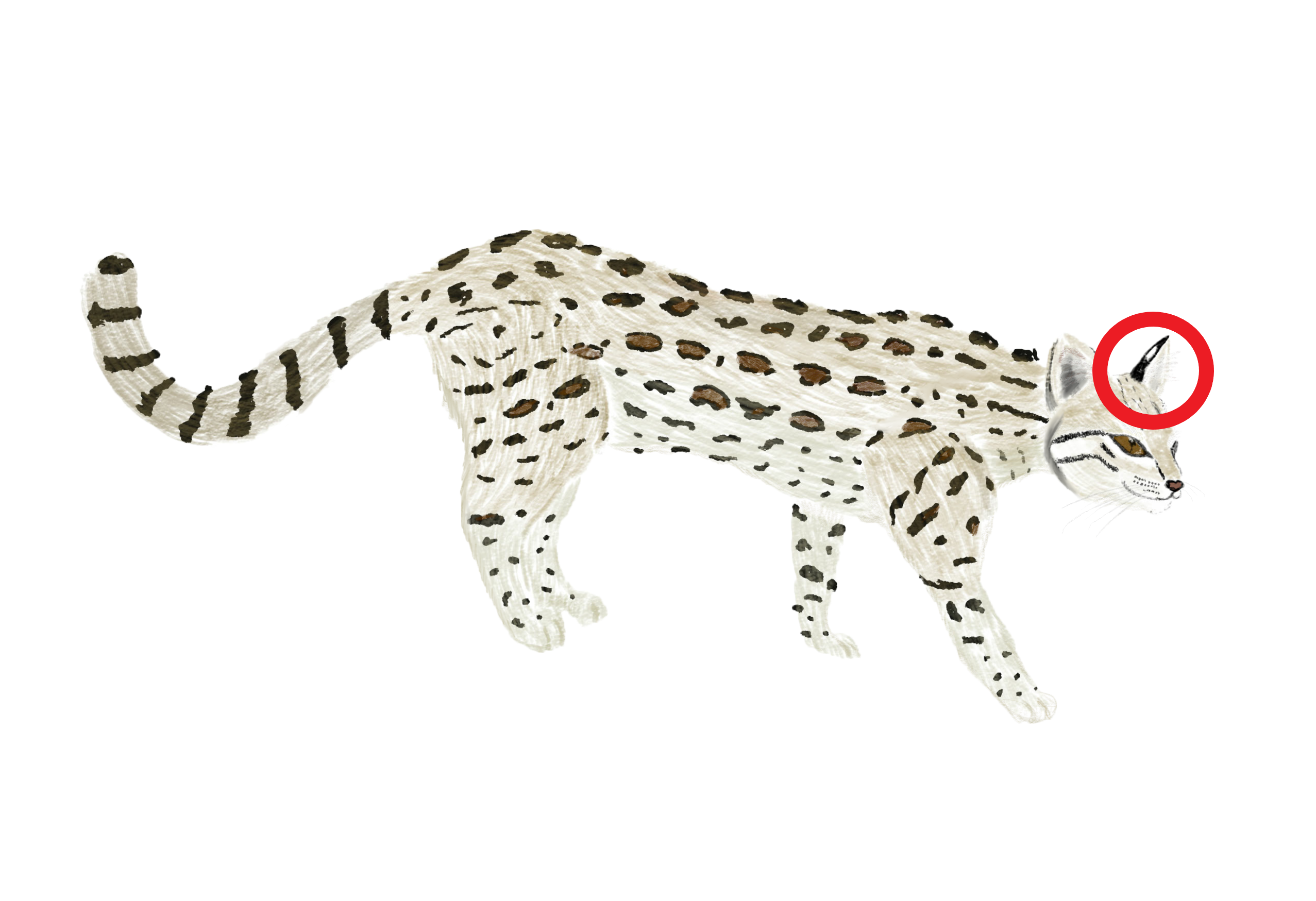

Existen dos teorías sobre la función de estas manchas. Una de ellas o la combinación de ambas podrían explicar la presencia de estas manchas:
There are two theories regarding the function of these spots, either individually or in combination, could explain their presence:
1.Comunicación:
1. Communication:
Podrían servir para comunicarse con miembros de la misma especie; especialmente facilita que las crías sigan a la madre. Los felinos parecen utilizar el movimiento de las orejas para comunicarse. El contraste de colores que aporta esta mancha aumenta la visibilidad y por tanto facilita la comunicación principalmente en hábitats con alta densidad de vegetación.
The spots may serve to communicate with members of the same species, especially facilitating the ability of offspring to follow their mother. Felids use ear movement to communicate, and the contrasting colors provided by these spots increase visibility, facilitating communication, particularly in habitats with high vegetation density.
2.Amenaza:
2. Threat display:
Podrían funcionar como un instrumento de amenaza, pudiendo ser intimidante para el rival al combinarse con el movimiento.
The spots may serve as a threatening display, being intimidating to rivals when combined with movement.
Referencias: Galván 2020, Schaller 1967, Javôs 2012, Hingston 1933. References: Galván 2020, Schaller 1967, Javôs 2012, Hingston 1933.Coloración
Coloration
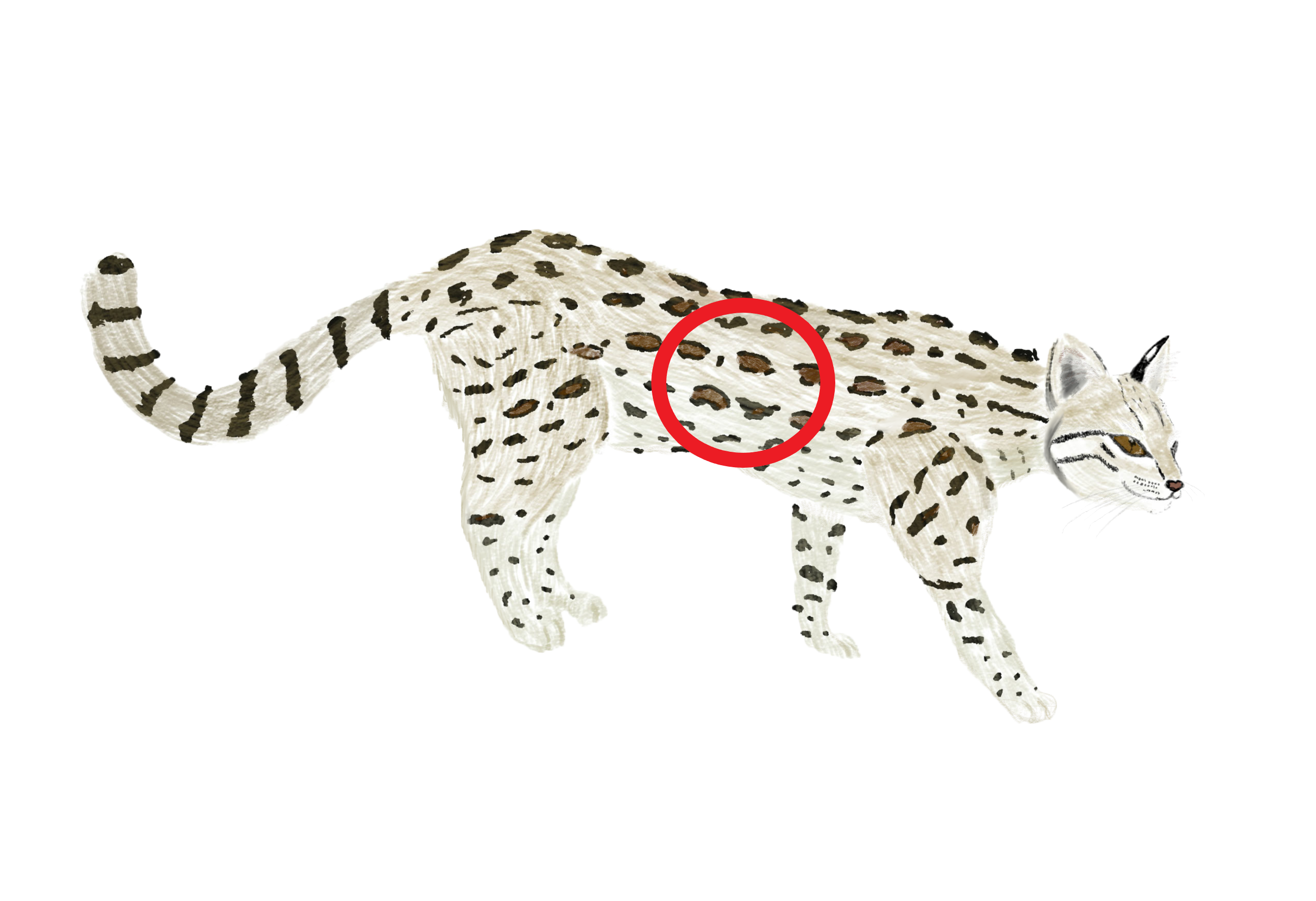
Individuos con manchas
Spotted individuals
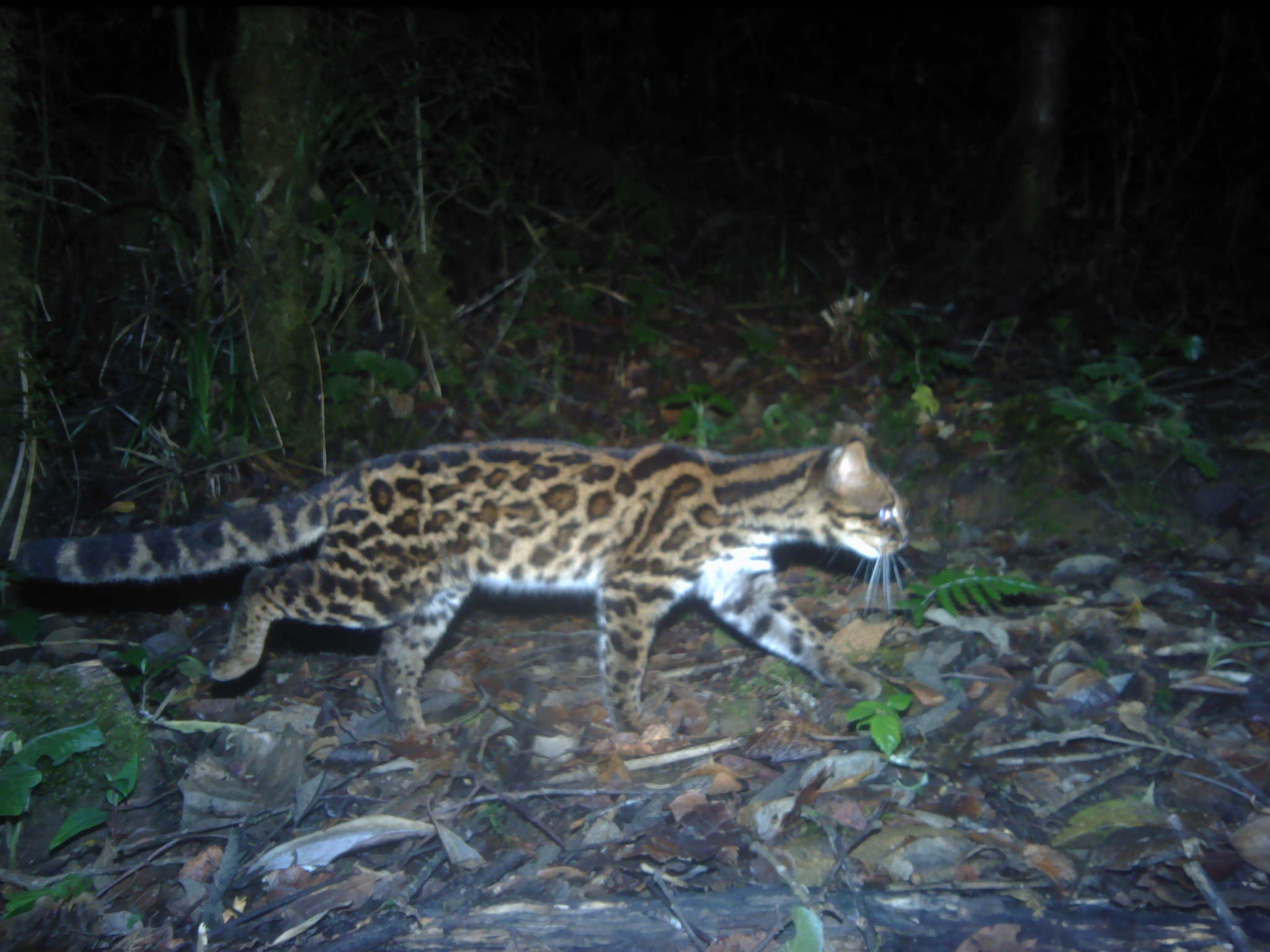
----
Individuos melánicos
Melanistic individuals
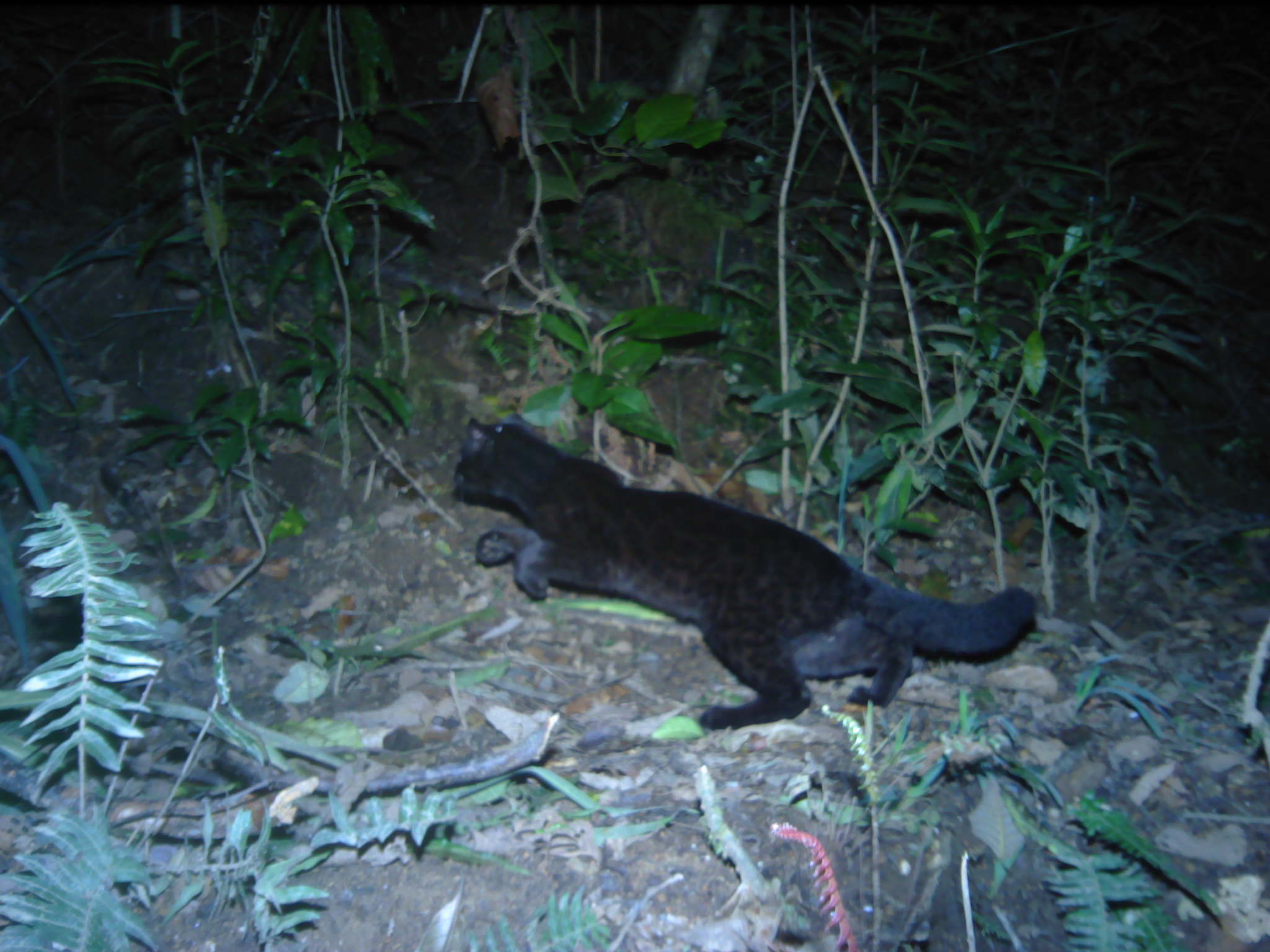
Cola
Tail
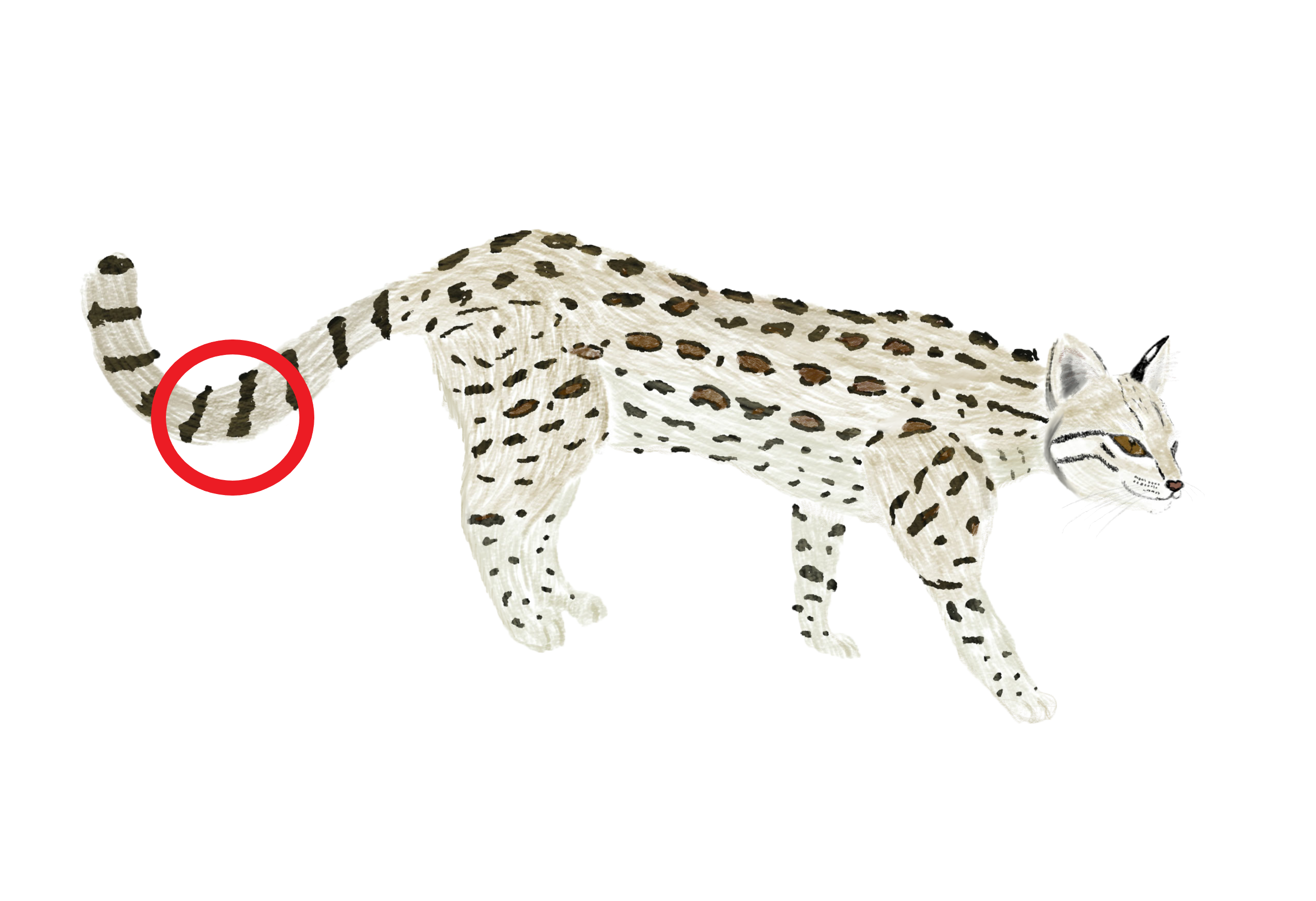
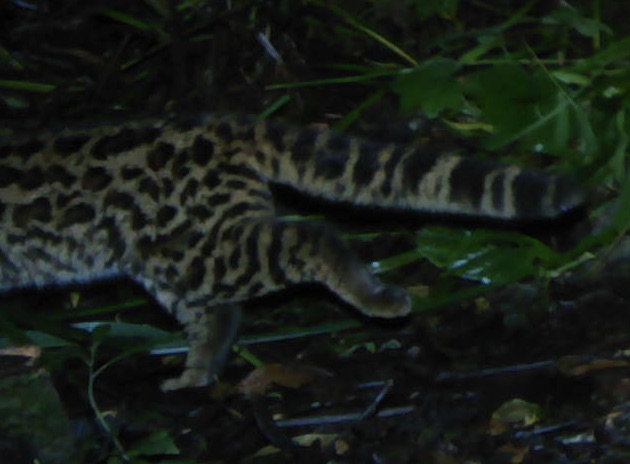
Su cola es larga (representa casi un 60% de la longitud total: cabeza + cuerpo) y es relativamente gruesa. Estas características de la cola pueden ayudar con el equilibrio cuando escalan árboles. (Referencias: Oliveira & Feijó 2017, Kitchener et al. 2010 y nuestras observaciones durante las capturas).
The oncilla has a long tail, which represents almost 60% of its total length (head + body), and it is relatively thick. These tail characteristics can aid in balance when climbing trees. (References: Oliveira & Feijó 2017, Kitchener et al. 2010, and our observations during captures).
Cola anillada: En carnívoros se ha asociado con especies de hábitos arborícolas y nocturnos que viven en bosques o hábitats cerrados. (Referencia: Ortolani 1999).
Ringed tail: In carnivores, a ringed tail has been associated with species that have arboreal and nocturnal habits, living in forests or closed habitats. (Reference: Ortolani 1999).
No está claro cuál es la función adaptativa de este patrón anillado. Es posible que haya evolucionado para cumplir alguna función de comunicación. Podría ser un tipo de señal para distraer posibles depredadores (como felinos más grandes) o presas, o simplemente para comunicarse entre individuos de la misma especie, pero todavía no está claro. (Referencias: Ortolani 1999, Caro 2009).
The adaptive function of the ringed tail pattern remains unclear. It is possible that it has evolved to serve some communication function. It could be a type of signal to distract potential predators (such as larger felids) or prey, or simply to communicate among individuals of the same species, but it is still not fully understood. (References: Ortolani 1999, Caro 2009).
